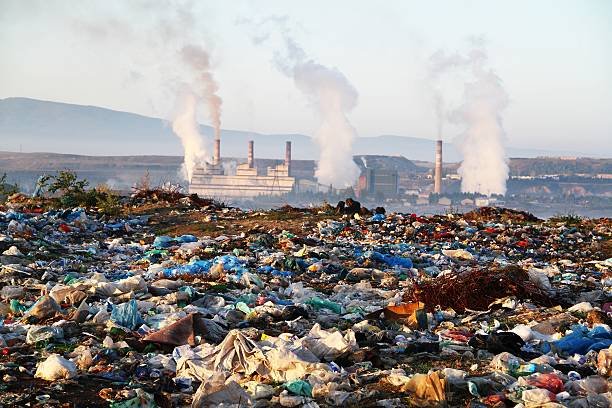Question: Describe five sources of methane emissions.
Methane is a potent greenhouse gas that has significant implications for climate change. Here are five sources of methane emissions, explained in a way that’s easy for high school students to grasp:
Livestock Digestion (Enteric Fermentation)
Explanation: Ruminant animals like cows, sheep, and goats produce methane during digestion. This process is called enteric fermentation, and it occurs in the stomachs of these animals.
Example for High School Students: Picture a cow grazing in a field. When it eats, its stomach produces methane gas that gets released, usually when the cow burps.
Rice Paddies
Explanation: Wetland rice paddies create conditions that are anaerobic (lack of oxygen), which leads to the production of methane gas.
Example for High School Students: Think of a rice field covered in water. The muddy, waterlogged soil is a place where methane gas forms and then escapes into the air.
Landfills
Explanation: As organic waste decomposes in landfills without proper exposure to air, methane gas is produced.
Example for High School Students: Imagine throwing away food scraps or yard waste. When they end up in a landfill, they break down in a way that produces methane gas, which then rises into the atmosphere.
Fossil Fuel Production and Use
Explanation: Methane is released during the extraction, processing, and transportation of fossil fuels like oil and natural gas.
Example for High School Students: Think of a natural gas pipeline or an oil drilling site. During the process of getting these fuels out of the ground and into our homes and cars, methane can leak out.
Wetlands
Explanation: Natural wetlands are also sources of methane emissions. The anaerobic conditions in the waterlogged soil of wetlands facilitate the production of methane.
Example for High School Students: Imagine a swamp or marshy area. The soggy ground and stagnant water create conditions that allow methane to form and be released into the air.
Understanding these sources of methane emissions is crucial for tackling climate change, as methane is far more effective at trapping heat in the atmosphere compared to carbon dioxide, albeit for a shorter duration.
Guide: How to Answer the Question “What are Five Sources of Methane Emissions?”
High school students tackling the question, “What are five sources of methane emissions?”, can benefit from a structured approach to answering it. This guide will help you understand what to consider and suggest theoretical frameworks to deepen your answer.
What to Consider
- Scope of Impact: Is the source of methane local, regional, or global? How significant is its contribution to overall methane levels?
- Human vs Natural Sources: Understand the balance between methane emissions caused by human activities and those that are natural.
- Sustainability Aspects: Consider whether the methane source can be managed or reduced through sustainable practices.
- Interconnected Factors: Are there multiple activities or conditions that contribute to methane emissions in each source?
Theoretical Frameworks
Systems Theory
This theory can help you understand how various elements, whether they’re industries or natural processes, contribute to the overall methane emissions system.
Environmental Economics
Use this framework to discuss how economic incentives or lack thereof can impact the level of methane emissions from different sources.
Sustainability Theory
This can help you assess how sustainable or unsustainable certain practices are, and whether changes can mitigate methane emissions.
Structuring the Answer
- Introduction: Briefly outline that methane is a potent greenhouse gas, and understanding its sources is crucial for addressing climate change.
- Body:
- First Point: Livestock Digestion (Enteric Fermentation)
- Describe what it is and its impact.
- Apply Systems Theory to discuss how agriculture fits into the larger methane emissions system.
- Second Point: Rice Paddies
- Elaborate on the anaerobic conditions leading to methane emissions.
- Use Sustainability Theory to discuss if more sustainable farming methods could reduce emissions.
- Third Point: Landfills
- Explain how organic waste decomposition leads to methane.
- Use Environmental Economics to talk about waste management policies.
- Fourth Point: Fossil Fuel Production and Use
- Discuss how the fossil fuel industry contributes to methane emissions.
- Apply Systems Theory to show how this sector is interconnected with others.
- Fifth Point: Wetlands
- Describe the natural methane emissions from wetlands.
- Use Sustainability Theory to discuss whether human activities like draining wetlands impact methane levels.
- First Point: Livestock Digestion (Enteric Fermentation)
- Conclusion: Summarize the five sources of methane emissions and reiterate their importance in the context of climate change.
By following this guide, you’ll be able to provide a thorough and well-reasoned answer that not only lists the sources of methane emissions but also delves into the complexities of each.

